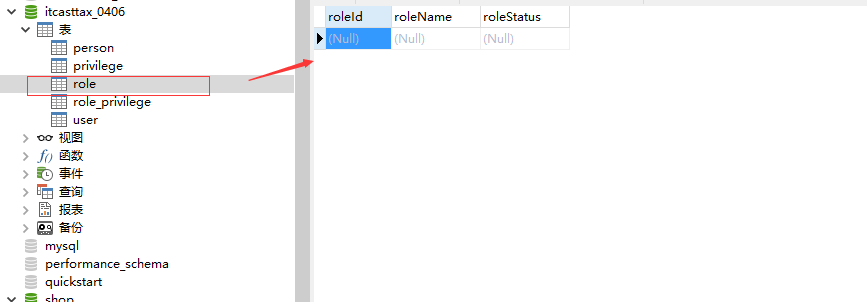1、实体类
package cn.ecut.nsfw.role.entity;
import java.io.Serializable;
import java.util.HashSet;
import java.util.Set;
/**
* 用户角色
* @author pengYi
*
*/
public class Role implements Serializable {
private String roleId;
private String roleName;
private String roleStatus;
//一个用户对应多个权限
private Set<RolePrivilege> roleSet = new HashSet<RolePrivilege>();
public Set<RolePrivilege> getRoleSet() {
return roleSet;
}
public void setRoleSet(Set<RolePrivilege> roleSet) {
this.roleSet = roleSet;
}
//角色状态
public static String ROLE_STATUS_VALID = "1";//有效
public static String ROLE_STATUS_INVALID = "0";//无效
public String getRoleId() {
return roleId;
}
public void setRoleId(String roleId) {
this.roleId = roleId;
}
public String getRoleName() {
return roleName;
}
public void setRoleName(String roleName) {
this.roleName = roleName;
}
public String getRoleStatus() {
return roleStatus;
}
public void setRoleStatus(String roleStatus) {
this.roleStatus = roleStatus;
}
}
2、配置文件
<?xml version="1.0" encoding="utf-8"?> <!DOCTYPE hibernate-mapping PUBLIC "-//Hibernate/Hibernate Mapping DTD 3.0//EN" "http://hibernate.sourceforge.net/hibernate-mapping-3.0.dtd"> <hibernate-mapping> <class name = "cn.ecut.nsfw.role.entity.Role" table="role"> <id name="roleId" type="java.lang.String"> <column name="roleId" length="32" /> <generator class="uuid.hex" /> </id> <property name="roleName" type="java.lang.String"> <column name="roleName" length="20" not-null="true" /> </property> <property name="roleStatus" type="java.lang.String"> <column name="roleStatus" length="20" not-null="true" /> </property> <!-- 一对多关系 --> <set name="roleSet"> <key column="roleId"/> <one-to-many class = "cn.ecut.nsfw.role.entity.RolePrivilege"/> </set> </class> </hibernate-mapping>
注意事项:一定要说明属性类型如上,java.lang.String 以及 在表中的列的名称、长度、not-null 等属性
3、结果
